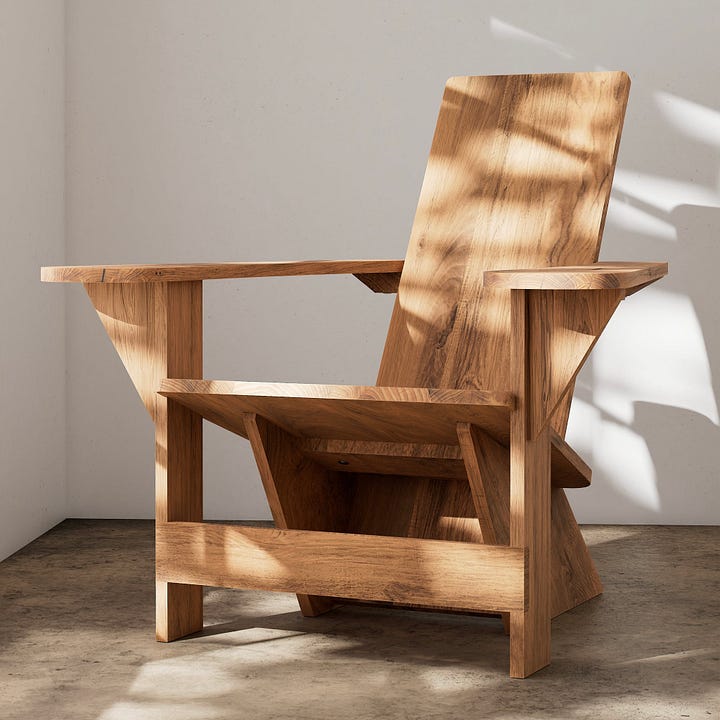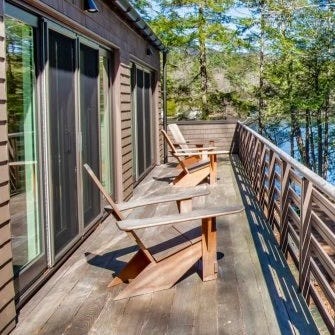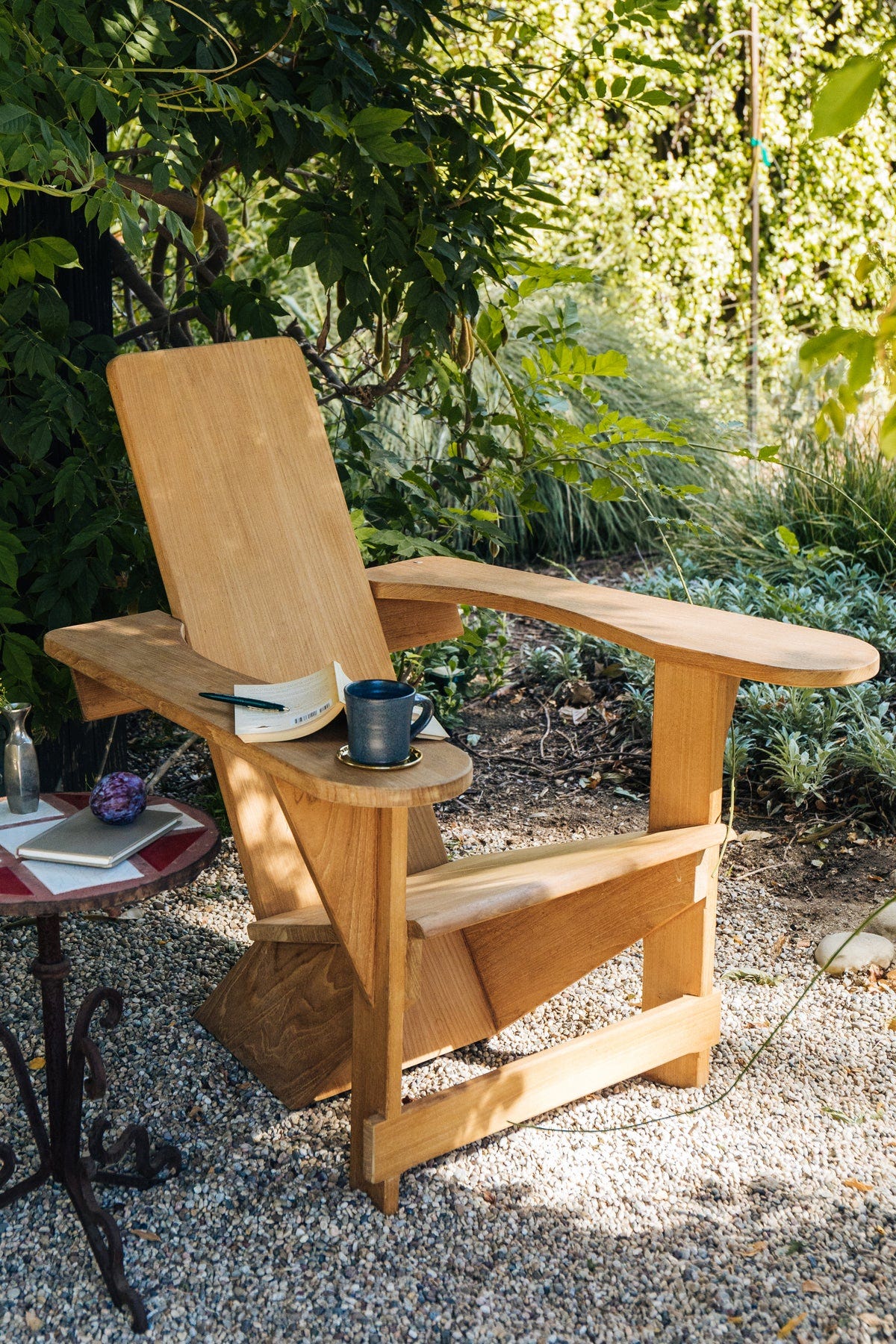When The World’s Most Ubiquitous Summer Chair Stole My Attention, Heart, Mind (Sanity?)
The Adirondack Chair. Truly, who knew?
Several months ago, an outdoor collection surfaced that really got me revved up and the star piece, in my humble opinion, was a relaxing-ish1 looking wooden chair. By all appearances, it had the general lines of a typical Adirondack chair, but the precise vernacular was pretty different. It didn’t evoke feelings of cedar shingles, Tom Collins, and what my stepdad not-lovingly-at-all referred to as Jackass Pants. Rather, and without any knowledge of its actual origin, it felt more rustic, more Northern California, more Redwoods, more Salmon Creek to me.
(I turned out to be entirely wrong on that last bit, but stick with me here.)
This particular chair’s price point gave me hives; I figured, ho-hum, probably a proprietary design and then moved on. That was until more recently when another, extremely similar chair2 hit the market and then I spotted a third chair (whose origins I couldn’t figure out) at the fancy lake house my in-laws rented earlier this month.


Clearly, not proprietary—and so I was off, sucked into the vortex of my own curiosity once again.
In 1903, a man named Thomas Lee, of Massachusetts, was at his family’s summer home in Westport, New York, tucked in the Adirondack Mountains. Dissatisfied by the available Victorian-era outdoor seating options, Lee put together a few simple wooden chairs, with an incline at the seat and a natural lean at the back. Side note: Can you even imagine how shocking it must have been to assert your own bodily need to be comfortable at the turn of the last century? Sometimes seating is radical.
Shortly after, in 1905, Lee gave the chair idea to his carpenter friend Harry Bunnel, who then patented it as the Westport Chair. (Lil bit of controversy here: Some think Bunnel patented the chair on the sly; others think that Lee, a wealthy Bostonian, willfully gave the chair to his hunting pal, who was suffering hard times.) He went into production, finding the chairs to be an overall hit, with an additionally robust market among people visiting the mountains convalescing with tuberculosis. At the time, loungers called “cure chairs,” were popular, a term borrowed from German TB countryside sanatoriums. While the Westport Chair was not made explicitly for this purpose, it did wind up circulating the convalescing space, especially as people tended to go in and out of acute illness. Eventually, the chairs became known as the Adirondack Chair, a name that, you know, stuck.
Decades later, in the 1930s, a businessman named Irving Wolpin ended up acquiring the patent from Bunnel and, true to the only thing I know about him (“businessman”) he tweaked the design to be more affordably made and mass produced, with thinner wooden slats as opposed to solid pieces of wood. The chairs have more or less remained unchanged since this last adjustment. Of course, this detail caught my attention immediately—first of all, in my mind an Adirondack Chair is all slat; second of all, the chair of my desires is, emphatically, not. The sweaty hot pink stripes on the back of your thighs after standing up seemed so iconically Adirondack Chair—I was/am floored that this was, in fact, an innovation that came 30 years later.
Anyway.

I looked instead for a Westport Chair and lo—there it was. In fact, the Westport Chamber of Commerce described that Lee “used a single plank of local hemlock [to design] a comfortable chair with slanted back and wide arm rests to hold drinks and food.” The original Adirondack chair of 220 years ago! Not Redwoods-y at all; purely New Yorkian. And extremely excellent, as far as I can figure.
Sources and further reading:::
For Sale: Jardinique; Loll (but plastic); Etsy; Original by Thomas Lee 👀; 1st Dibs;
The History of the Adirondack Chair
Complete Adirondack Chair History: From Origins to Icon
Yale University Art Gallery: Westport Chair
The Feel-Good Recliner That Cures What Ails You
Object Lesson: The Adirondack Chair
The Adirondack Chair: A Celebration of a Summer Classic
Lasting Legacy: The Adirondack Chair History
Speaking of lake culture in New York. (LINK)
Lake culture in Wisconsin? (LINK)
Lake culture in Nova Scotia! (LINK)
Not lake culture (but not not lake culture?) (LINK)
Fact-check: Adirondack style chairs have never been legitimately comfortable.
Realizing only now that if I had actually read the product description here I could have saved myself a whole lot of time…










FWIW, my family had some straight-backed Adirondack chairs not unlike these and one with a curved back like what the later illustration in your newsletter. We all agreed the curved back one was more comfortable.